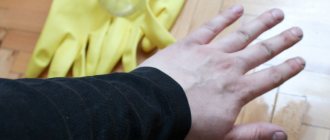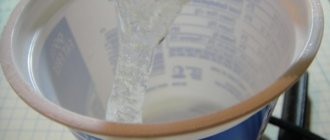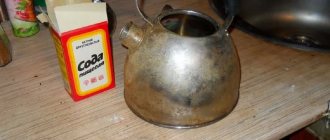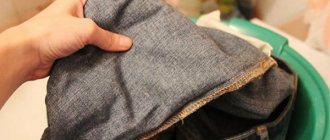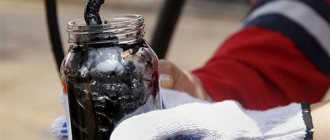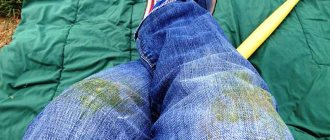10/07/201602/14/2017 Maria Ivanova
Epoxy resins are produced in a liquid state for various household needs. By adding a hardener, the resin turns into a solid consistency.
The use of epoxy resin is multifaceted: from gluing metal and plastic surfaces to creating decorative items.
In its solid state, epoxy can stick tightly to materials that are not intended for this, and then you should know how to dissolve the epoxy resin in order to remove its traces.
Where are resin contaminations most often located?
The most common way to use epoxy resin is as an adhesive. Epoxy glue is an old proven tool for repairing rubber products, shoes, gluing wooden and ceramic surfaces.
In domestic conditions, glue most often gets on unprotected areas of the skin of the hands, as well as on items of clothing. Therefore, it is strongly recommended to work with glue wearing protective gloves and an apron.
If the substance does get on the skin, it is necessary to take immediate action, since synthetic resin is an aggressive chemical and can cause burns to the epidermis, dermatitis, and allergic reactions.
Material characteristics
Epoxy is a very strong chemical with short polymer chains. Hardening of the raw material occurs after contact with the hardener (compound). One- or two-component material is used for lamination, filling (floors, furniture) and gluing parts.
If you did not notice the resin stain while working, it will be very difficult to remove after hardening. Because of its toughness, epoxy cannot be removed by scraping, rubbing, or sanding. Due to its resistance to mechanical damage, even scratches will not appear on the contaminated surface.
Epoxy resin got on your hands - what to do?
As mentioned earlier, when working with chemicals, you must wear protective clothing.
But if restoration work is delayed, for example, when gluing a rubber boat, then latex gloves can easily tear and allow the product to reach the skin of the hands. In this case, you need to take the following steps.
- Remove the gloves from your hands immediately and discard them; you will no longer need them.
- Wash your hands immediately with laundry or tar soap.
- After the bulk of the product has been washed off, it is necessary to dissolve the remaining stains of the product on the skin. For cleaning, you can choose acetone, nail polish remover, denatured alcohol, etc. Soak a cotton swab in the liquid and carefully wipe the glue off your hands.
- After a positive result, wash your hands again with baby soap that has a softening effect.
- Solvents are no less harmful to the delicate skin of your hands; they evaporate moisture from the cells. Therefore, upon completion of cleansing, you should apply a rich nourishing cream to the skin of your hands: baby cream, olive cream.
What if the epoxy has already hardened?
In this case, the picture will be completely different. The frozen material binds to surfaces almost at the molecular level and can no longer be removed with acetone alone. You can try to get rid of epoxy mechanically, however, experts call this not the best choice. Among the disadvantages of the method are labor intensity and low efficiency. It is best to use it in cases where all other methods have proven ineffective.
Dried resin on hands - how to wash it off?
Renovation work is very exciting, especially for hardworking men. And often resin stains on the skin of the hands are found already in a hardened form, which can be tried to be washed off in several ways.
- Ice cubes. If you are at home, you can use a cube or piece of ice from the freezer. Rub the dirt vigorously with ice and wait. Under the influence of cold, the glue will dry quickly, and it can be carefully removed from your hands, for example, with the blunt side of a knife.
- Oily liquids . Spread the resin stain with a thick layer of oil: sunflower, olive, cosmetic. As an option, high-fat mayonnaise is sometimes used. Periodically rub the oily substance into the epoxy stain. Then you can try to remove the softened resin from the skin with gentle movements.
- Solvent. Both for hardened stains and for fresh smears of glue, a solvent or various alcohols are used: denatured alcohol, wine alcohol, ammonia, etc.
Epoxy glue on clothes - cleaning variations
Frozen clumps of resin on good clothes are an unpleasant phenomenon, but also completely removable.
Advice! Large pieces of dirt must first be mechanically scraped off with a knife or a thin file. This method is applicable only for rough work clothes: overalls, denim trousers, aprons.
Finer fabrics should be cleaned delicately and carefully. You can remove stains at home using well-known products. For best results, glue stains must be frozen. We place the clothes in the freezer for two to three hours, the cleansing process will go faster and more efficiently.
- Alcohols. Wine, ammonia, and denatured alcohol are excellent means for resuscitating your favorite clothes. We moisten a piece of clean rag or a cotton-gauze swab in alcohol and begin to clean the dirty stains. As a rule, with some effort, it is quite possible to achieve complete victory over the dirt.
- Turpentine. Natural pine extract has a good cleansing effect. For fabrics, it is better to choose pharmaceutical gum turpentine rather than technical turpentine. Apply generously to the stain and leave it on the clothing material for a while. Take a soft brush and scrub the stain. Turpentine has a sharp, characteristic odor, which can be eliminated by subsequent washing in the machine with aromatic powder and conditioner. For stubborn stains, use a solution of turpentine and alcohol mixed in equal parts.
- Melting. Epoxy can both harden and liquefy. For this purpose, a heating method is used. For fabric, ironing stains with a hot iron works well. Lay the material out on an ironing board and place a piece of clean plain fabric or a paper towel on both sides under the stains. With intensive ironing, the glue will gradually melt and be absorbed into the substrate. After the procedure, light stains should also be rubbed with alcohol to consolidate the effect. The final stage of cleaning will be automatic washing of clothes on a standard cycle.
- Store-bought stain removers. Some types of stain removers are very successful at removing even stubborn stains such as epoxy glue. Stains from white clothing should be washed with oxygen-containing bleaches. Soak a white item in warm water, add bleach and leave for 1-2 hours to act. Yellowish stains on the fabric after soaking will disappear when washed in an automatic machine.
- Solvents. Silk and synthetic fabrics lend themselves well to cleaning with a range of solvents. Printed fabrics can be cleaned with nail polish remover; it is less aggressive to fibers and patterns. For difficult to remove stains from plain clothes, white spirit or acetone are more suitable.
General rules for removing resin marks
Resin is a complex structure in chemical composition, which contains esters, acids and alcohols. Under normal conditions it is in a solid state. Resins do not dissolve in water, so stains from them cannot be removed by regular washing.
The resin melts well when heated above 110C and in solvents. When cooled, it becomes brittle and crumbles easily. Knowing these properties, removing resin stains will not be difficult.
You need to follow several rules so that no traces of resin contamination remain. In this case, it is necessary to prevent accidental damage to the fabric of the product:
You should start cleaning as quickly as possible. The sooner you start scrubbing off a tar stain, the easier it will be to get rid of it.
Do not wash off uncured resin with a napkin or hand.
It will be smeared on the surface or absorbed deep into the fibers of the fabric, which will complicate the cleaning job.
Before removing the stain, you need to carefully scrape off the main layer of resin with a knife, without rubbing the stain into the fabric. You can use a spatula, the blunt side of scissors, a spoon, or a plastic card.
Thin materials can be damaged, so we do not recommend performing such actions with them.
Since after preliminary cleaning a trace of resin still remains, it is necessary to use one of our recommended products to remove it. But before scrubbing dirt from clothes, you should determine the type of fabric and use the appropriate removal method. This will prevent damage to the product.
Resin is an extremely sticky substance, so it sticks to absolutely everything. To avoid having to subsequently scrub the sofa, carpet or other wardrobe items, you should remove it from a hard surface (from a table or plank) covered with an unnecessary rag.
When removing a small tar stain from clothing, the cleaning agent should be applied to it with a cotton swab. Large stains should be cleaned from the edges to the center. This will prevent it from smearing over the surface of the fabric and increasing the area being cleaned.
Do not wash a soiled item in the machine without first cleaning it - the resin may stick to other items and ruin them.
Non-standard methods for cleaning clothes
As practice shows, non-trivial ways to save wardrobe items dear to your heart also work.
For example, the well-known brands of carbonated drinks “Coca-Cola” and “Pepsi-Cola” have proven themselves well as a powerful household cleaner.
Of course, there is no need to add lemonade to the washing machine, but it is quite possible to mechanically remove stains from colored fabrics. After the obvious cleaning effect, it is better to wash the item thoroughly.
Dimexide is a cheap pharmaceutical product for treating postoperative sutures and compresses. Dimexide should be diluted in warm water in approximately a ratio of 1:3, wet the fabric generously with the solution, leave for a while, and then wash in the usual way.
Cleaning bathroom tiles from epoxy adhesive
Often, after installation and finishing work in the bathroom, sloppy smudges of epoxy remain on the tiles, since the grout is made on its basis.
Or epoxy glue was used to attach the cladding panels. If the surface is light enough, such unsightly smudges and stains will spoil the whole picture of a fresh renovation. You can remove stains from tiles using a variety of methods.
- Heating method. We remember that epoxy resin-based glue can soften. Therefore, we arm ourselves with household appliances: a hairdryer or a steam cleaner. We direct a stream of hot air onto the dirt and wait for it to melt. After some time, we clean off the softened dirt with a spatula and wash it with conventional products.
- Freezing method. A more complex but effective way to clean tiles. We will need a special refrigerant in an aerosol package. Having previously protected the skin and eyes with protective clothing and goggles, spray the liquid from the can onto the stain. After a few minutes, the fragile resin particles can be easily scraped off with a regular scraper or spatula.
- Chemical reaction method. You can quickly remove resin from ceramics, marble, and earthenware using chemical reagents. It can be boric, hydrochloric, nitric acid. Having treated the surface with the reagent very carefully, after a while we wash off the dirt with a concentrated washing solution.
As the experience of home-conscious and thrifty housewives shows, even such incredible pollution can be quickly eliminated without any special financial costs or titanic efforts. Take note of these simple recommendations, and your everyday problems will be solved quickly and effectively.

